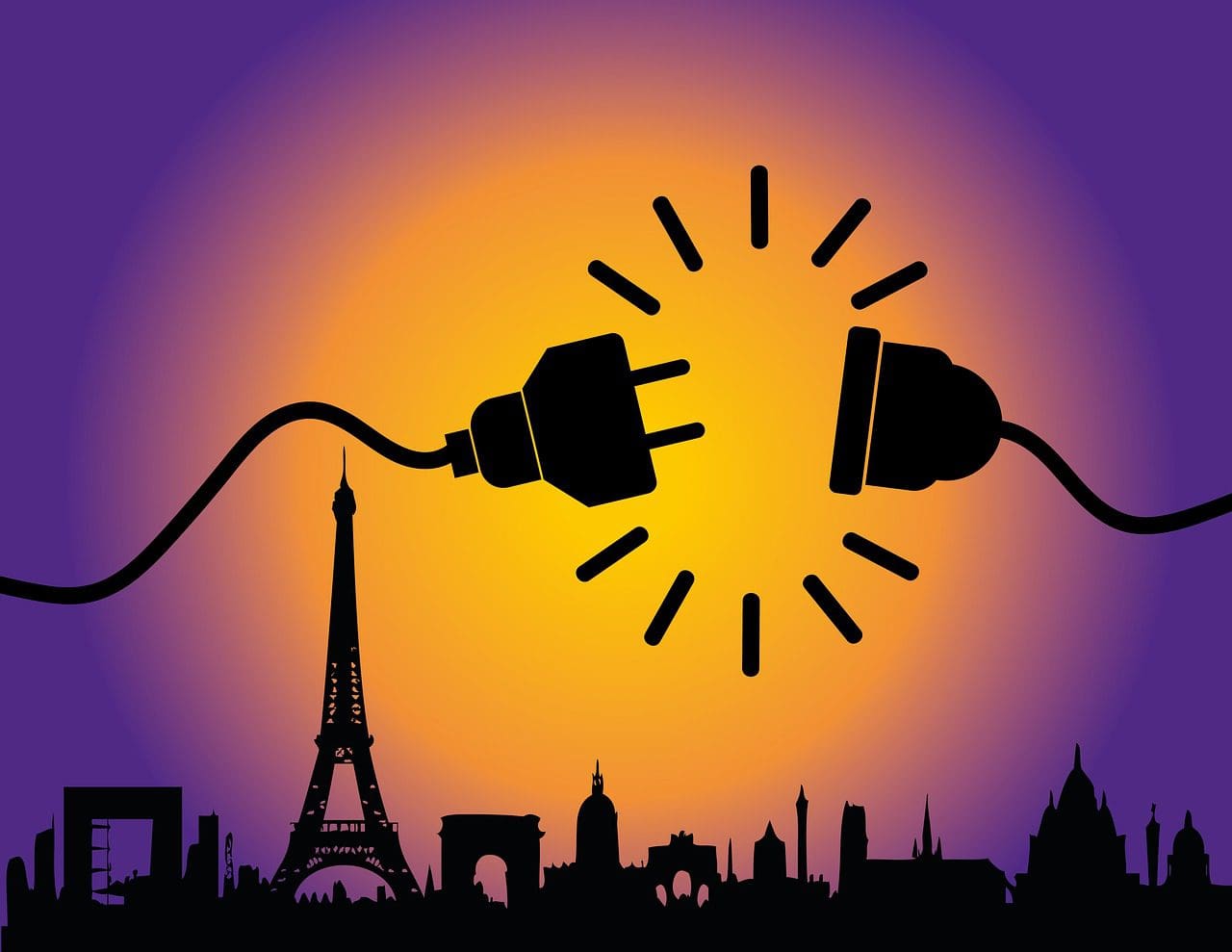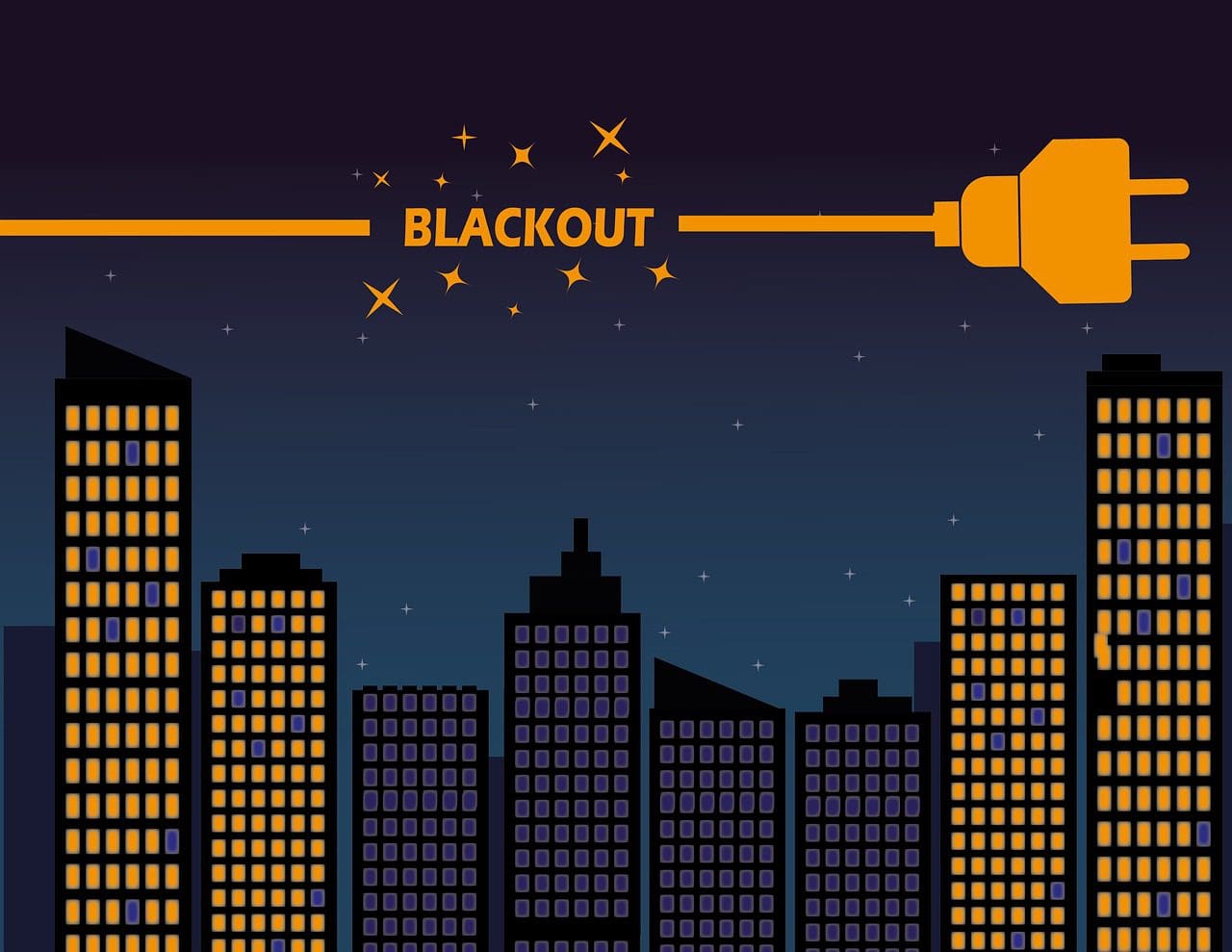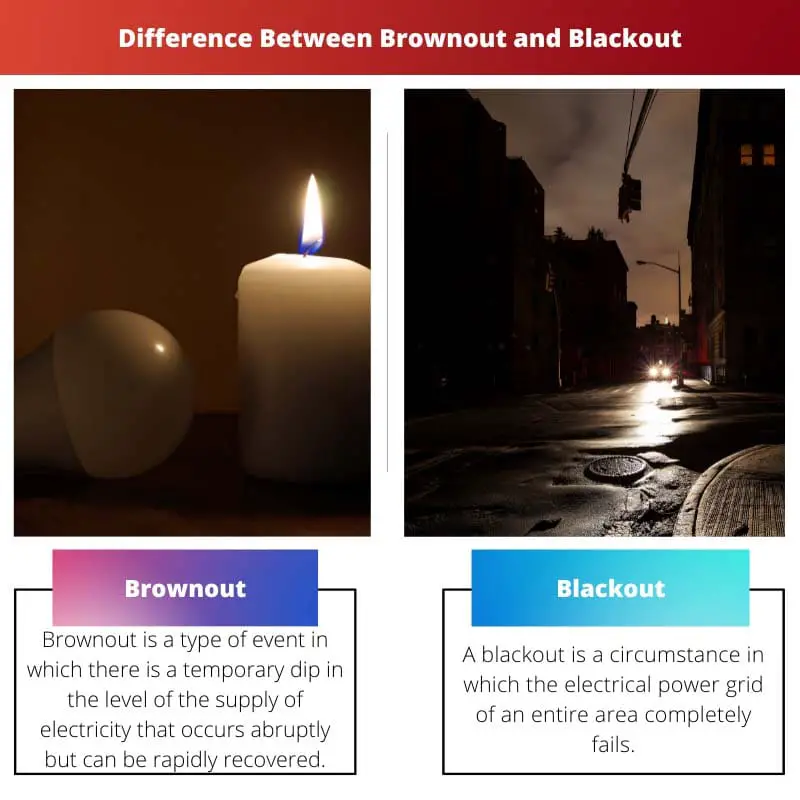Energy and power electrical grid systems are not always faultless. Power grid systems are put under strain occasionally, perhaps as a result of extreme heat or natural calamities such as cyclonic storms or severe rain.
These result in large voltage fluctuations, creating power surges or spikes, eventually leading to brownouts or blackouts.
While the power or electrical grid as a whole is nearly stable, blackouts and brownouts do happen commonly.
As a result, knowing the difference between the two types of power outages, blackouts and blackouts, is crucial to power outage readiness.
Key Takeaways
- Brownout is a temporary and partial loss of power, while a blackout is a complete loss of power for longer.
- Brownouts can damage electronic devices due to voltage fluctuations, while blackouts can disrupt essential services.
- Brownouts can be caused by high demand or inadequate power supply, while natural disasters or equipment failures can cause a blackout.
Brownout vs Blackout
Temporary dimming of light due to the lower supply of electric voltage resulting in damage to the electronic devices and machines like fridges, iron and chargers in residential and commercial areas. Black out refers to the total loss of electricity caused by problems in equipment’s and bad weather.

Brownouts are a type of circumstance in which there is a sudden dip in the power supply that can be swiftly regained.
Brownouts are a form of the strategic and preventative strategy employed by power grid providers to keep an overloaded system from going dark.
If the Brownout persists, it may shorten the life of appliances designed to operate only at a specific voltage threshold.
A blackout occurs when the electrical power grid in a whole area completely fails. On the other hand, this condition could endure anywhere from a few minutes to several days.
Blown transformers, downed utility lines, and popped fuses are some of the most common causes of blackouts. Power lines can be destroyed by major natural disasters, resulting in complete blackouts.
Comparison Table
| Parameters of Comparison | Brownout | Blackout |
|---|---|---|
| Experienced for | Short time | Long time |
| Causes | Preventative measures to avoid blackouts. | Blown transformers, utility lines of downed power and popped fuses |
| Effect and affect | Affect appliances severely. | Does not affect appliances. |
| What happens? | Voltage level drops down and returns to its normal level within sixty seconds. | The supply of power is disrupted and fails. |
| Recovery time | Minutes-hours | Hours- days |
What is Brownout?
Brownout is a type of event in which there is a temporary dip in the level of the supply of electricity that occurs abruptly but can be rapidly recovered.
Brownouts are a form of the strategic and preventative strategy employed by power grid providers to safeguard an overloaded system from having a blackout.
If the Brownout persists, it may shorten the life of appliances designed to work only at a specific voltage threshold. Brownouts, as a result, cause sensitive equipment to fail. That equipment may show signs of malfunction or even become fried.
In the event of a brownout, the voltage level lowers and then restores to its usual level within sixty seconds.
Brownouts have a substantially shorter recovery time. It can take anywhere from a few minutes to several hours. The situation returns to normal after that.

What is Blackout?
A blackout is a circumstance in which the electrical power grid of an entire area completely fails. This scenario, however, could persist anywhere from a few hours to many days.
Blown transformers, downed electrical lines and popped fuses are all common causes of blackouts.
Severe natural disasters can sometimes destroy electrical cables, resulting in total blackouts. When a blackout occurs, the current supply is abruptly cut off, and the appliances and equipment are turned off and shut down.
Blackouts, on the other hand, are less harmful than brownouts.
In the event of a blackout, the power supply is disturbed and fails. However, it takes a long time to get back on your feet. Blackouts take much longer to recover from. It can take a few hours to a few days to return to normal.

Main Differences Between Brownout and Blackout
- Brownout is a type of situation which is experienced temporarily in which there occurs a drop in the level of the supply of voltage which happens abruptly but can be recovered quickly. On the other hand, a Blackout is a type of situation in which a total crash down of the electrical power grid takes place in an entire area. However, this situation might last from several hours to days.
- Brownout is a strategic and preventative measure used by power grid utilities to protect an overloaded system from experiencing a blackout. On the other hand, some of the major causes of blackouts are blown transformers, utility lines of downed power and popped fuses. Sometimes severe natural calamities can destroy the power lines and result in total blackouts as well.
- If the situation of the Brownout continues, it can affect the longevity of those appliances which are manufactured to work against a certain threshold voltage only. Thus, Brownouts fail sensitive equipment. Those appliances may show malfunctioning or end up getting fried as well. On the other hand, when a blackout happens, it simply results in a direct stoppage of the current supply. Thus, the appliances and devices are turned off and suddenly shut down. However, blackouts are comparatively less dangerous than Brownouts.
- In the case of a brownout, the voltage level drops down, and then the level of the voltage again returns to its normal level within sixty seconds. On the other hand, in case of a blackout, the supply of power is disrupted and fails. However, it takes a considerable amount of time to recover.
- The recovery time of Brownouts is much lesser. It only takes around a few minutes to some hours. After that, the situation becomes normal. On the other hand, the recovery time of blackouts is much more. It takes around a few hours to a few days as well to restore the normal situation.

- http://ipnpr.jpl.nasa.gov/progress_report/42-197/197A.pdf
- https://dl.acm.org/doi/abs/10.1145/3208903.3212059

A very helpful comparison of brownouts and blackouts. It’s crucial to be aware of the unique risks and recovery times associated with each type of power outage.
I found this post very insightful. The thorough explanation of what happens during a brownout and blackout really helped me understand the risks associated with each.
I never realized how much damage brownouts could cause to appliances. This post made me more aware of the risks in such situations.
Yes, Ben. It’s important to understand the effects of both types of power outages, especially in protecting our electronic devices.
The comparison between brownouts and blackouts was really helpful. This info is crucial for anyone interested in emergency preparedness.
I had no idea brownouts and blackouts were so different. This was eye-opening.
I agree, Lilly. The comparison table at the end is particularly helpful for understanding the distinctions between the two.
It’s surprising how many people don’t know the difference. This is a great explanation.
Informative and educational. Understanding the differences between brownouts and blackouts could potentially save a lot of money in the long run.
Great overview of the causes and effects of brownouts and blackouts. This is essential knowledge for anyone living in areas prone to power disruptions.
This was incredibly informative. It’s important to be aware of the differences between brownouts and blackouts and know how to respond in each case.
Great breakdown of the differences between brownouts and blackouts. Understanding these distinctions can help us protect our appliances and manage power outages more effectively.
Absolutely, Julia. Knowing the causes and recovery time of each will help us prepare better for these situations.
This post is a must-read for anyone living in an area prone to power outages.